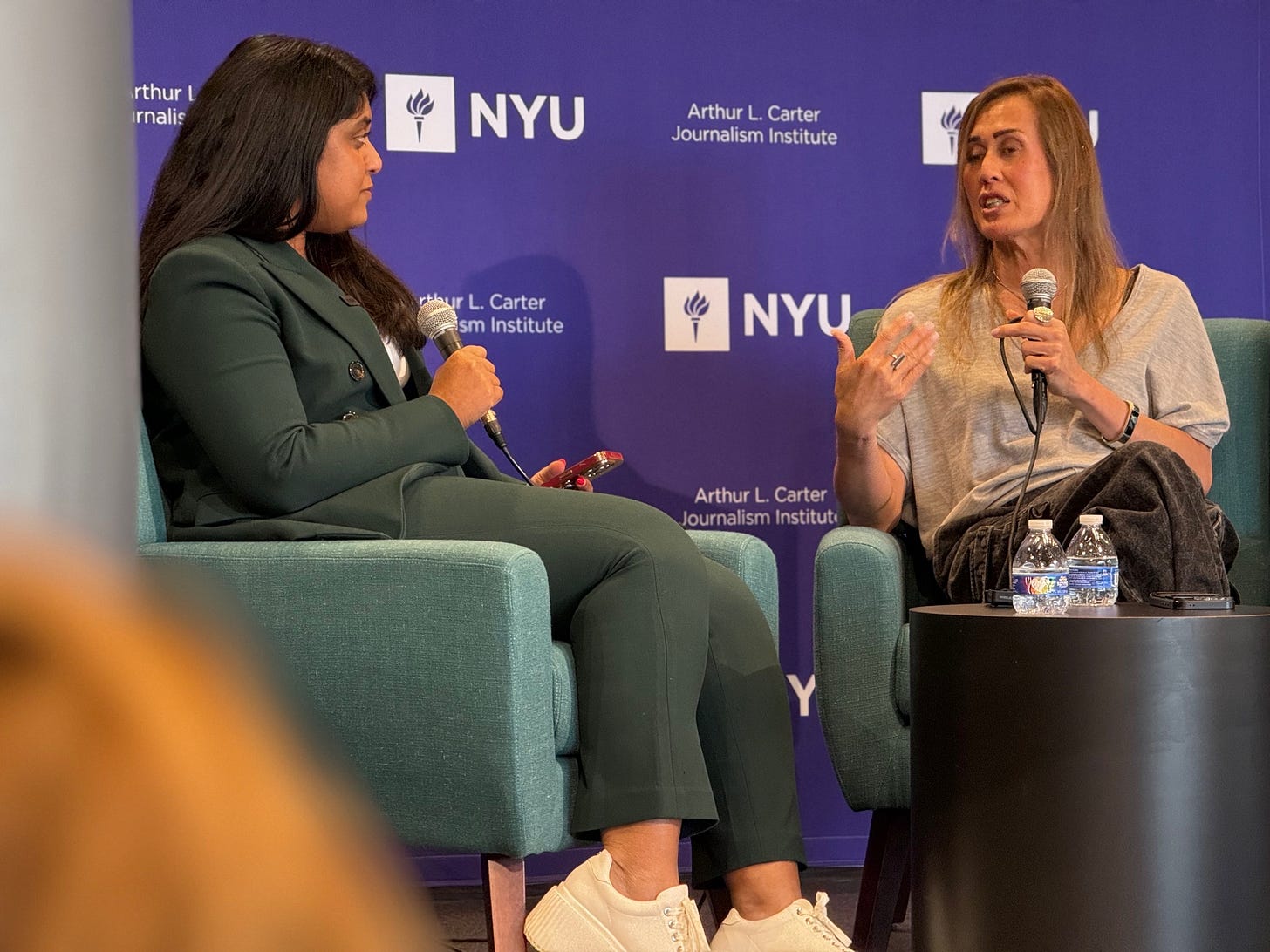
What if AI represents journalism’s opportunity to serve everyone rather than only those audiences large enough to attract advertisers?
That question has stuck with me since my recent conversation with Gina Chua, Executive Editor at Semafor, recorded live at New York University in collaboration with the AI networking group Humans in the Loop.
With decades in leadership roles across newsrooms as the former Executive Editor at Reuters and Editor-In-Chief at South China Morning Post, Gina is one of journalism’s most leading voices on AI.
During our conversation, she revealed something striking about her approach to AI experimentation. "I have a very deep and personal relationship with Claude now, where I'm just sort of sitting and we just start talking for hours," she said, describing her "vibe coding" sessions—rapid prototyping that turns ideas into functional tools. These late-night collaborations with AI have led to her experimenting with multilingual search engines, style guide bots, and content analysis systems.
This experimentation also led to her prototyping an AI editorial safety tool—a chatbot to democratize security expertise for journalists. "There's lots of news organizations that can't afford security advisors, don't have nine people full time doing this like we had at Reuters. So why not try to bring that information to the world?"
That prototype has since evolved into JESS (Journalist Expert Safety Support), a product that Newsroom Robots Lab has been developing in collaboration with the ACOS Alliance and CUNY's Journalism Protection Initiative to make expert security knowledge available to newsrooms worldwide.
Her vibe coding sessions showcase how AI has lowered the barriers to innovation. What once required teams of developers can now be prototyped by a single person with domain expertise and a simple conversation with an AI chatbot like Claude.
Here are three key insights I gained from our conversation:
1️⃣ Personalization Can Scale Inclusion If We Do It Right
For the first time, AI enables journalism to do what was once difficult: offer multiple versions of the same story, tailored to different audiences by geography, language, knowledge level or cultural context.
"You can't possibly write 25 versions of a story for 25 different people but a machine can," Gina said.
That unlocks audiences we’ve historically failed to reach. Newsrooms can now serve groups once considered too small, too remote, or too linguistically complex to justify commercial investment.
However, this power comes with a critical tension: the more we personalize content, the more we risk fragmenting our shared civic experience. Can journalism serve individuals and hold space for the collective? That's the paradox AI throws at us, and the answer will shape the next generation of news products.
2️⃣ Journalism's Value Must Move Upstream in the AI Era
Gina repeated a provocative take of hers she often shares: "We're not in the business of saving journalists. We're not necessarily even in the business of saving journalism. We're in the business of saving information in the public interest."
As AI grows adept at summarizing, rewriting, and even generating articles, much of what we traditionally consider “journalism” like storytelling, packaging, and writing can be automated. Yet the upstream work of reporting, cultivating sources, verifying facts, and making ethical judgments remains deeply human.
What becomes scarce and thus valuable is not the content but editorial judgment: asking the right questions, uncovering hard-to-access information, interpreting complexity, building trust with communities, and holding power to account.
According to Gina, journalism must move upstream toward investigation, verification, and meaning-making to remain essential. The rest may end up being handled by the machines.
3️⃣ AI Adoption Isn't a Tech Challenge, It's a Workflow One
Gina's experience embedding tech into newsroom routines made one thing clear: the hardest part isn't the tech. It's workflow.
AI is often viewed as an app that can simply be dropped into existing systems. Yet true integration demands rethinking how decisions are made—who touches what, and when. That means rewiring habits, redefining job expectations, and sometimes even shifting power structures.
AI adoption can’t rely on isolated pilot projects because without redesigned workflows, the technology will quietly fade away.
🎧 Listen to the full conversation with Gina Chua on Apple Podcasts, Spotify or other major podcast platforms.









